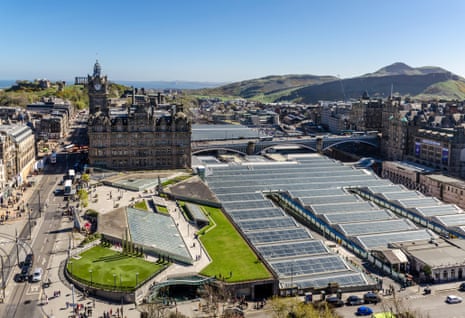It’s easy to see why Edinburgh, one of Britain’s most beautiful cities, is a magnet to visitors from across the world. It is also a place that instils pride and affection in those, like myself, who are native to it. Yet, this is a city that consistently undervalues its best asset: its historic centre.
It seems remarkable that Edinburgh’s unique architectural character should be at risk. It was the largely unspoilt juxtaposition of Old and New Towns that persuaded Unesco to grant it world heritage status in 1995. Yet the destruction during the 20 years since poses an interesting question: is Unesco world heritage status worth the paper it’s printed on?
Edinburgh’s role as a quality European destination underpins its economy, bringing in an annual £1.6bn to its coffers and its architectural heritage plays a huge role in this. That is why I am submitting a report to members of the UN Board of Auditors at Unesco headquarters in New York next month (assuming they’re prepared to listen) in a bid to persuade them to overturn the city’s world heritage status.
Edinburgh’s glory – and its marketability – is based on a stock of buildings that include Europe’s oldest inhabited Royal Palace, Holyrood, and a medieval castle perched on a looming rock. The classical New Town to the north was the setting for a philosophical enlightenment that astonished the world. As a stage set for a festival of culture and art, it is unrivalled.

Its sheer beauty can take the breath away. Look west from Calton Hill into a sunset of liquid gold and it’s easy to see why Benjamin Franklin’s business partner, David “Davey” Hall, told him it was the finest view anywhere. Try the morning prospect from Arthur’s Seat towards the Royal High School for some inkling of the scene that inspired Mendelssohn to write his Scottish symphony. Make the most of it, though. Hall’s view south will now include the anodyne “New Waverley” precinct. Meanwhile, there’s a plan for a posh hotel with extensions higher than Thomas Hamilton’s former school, regarded by some as one of the three most important neo-Greek buildings in the world.
Why do the powers-that-be want to trash this treasure? By “powers that be” I don’t simply refer to the local council, which seems minded to sanction developer mediocrity on an alarming scale. There’s also the Scottish government, which has declared an intention to offload the most architecturally significant public building in Scotland – Robert Adam’s General Register House. Its functions, it is claimed, can be transferred to a wasteland at distant Sighthill. Or how about the National Trust for Scotland, which decamped from its neoclassical headquarters in Charlotte Square to another out-of-town pale of settlement.
Unesco has been known to take punitive action. For building a bridge 1.8km outside the city, Dresden was stripped of its world heritage status, yet Edinburgh is being trashed wholesale, and nothing is done.
Why, when an entire range of listed historic buildings in St Andrew Square was ripped down without an Environmental Impact Assessment as required by law, did Unesco do nothing?
There were planning disasters in the 1960s but this is different. The Scottish parliament building debacle was also the first step on the road to Scotland’s disenchantment with Labour.
You’d think lessons might have been learned. Not a bit of it. There are plans to raze the last Georgian block between St Andrew Square and General Register House. Nearby, the hope is to reconstruct 1970s St James Centre, once vilified as a looming mass.
So what has Unesco world heritage status done for us? Frankly, it’s been an unmitigated disaster, and we’d have been better of without it.
